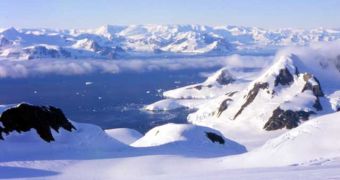The Arctic is said to get warmer than Antarctica. Still, hundreds of Antarctic glaciers are melting faster with the global warming, as found by a new satellite study.
The faster flow of the glaciers into the ocean could rise the sea levels higher and faster than currently forecast.
Satellite pictures of over 300 glaciers on the Antarctic Peninsula revealed their speed was 12 % quicker in 2003 than in 1993. "It is increasingly apparent that glaciers can be sensitive on much shorter time scales than traditionally thought," said lead author Hamish Pritchard of the British Antarctic Survey.
"The Antarctic Peninsula's annual average air temperature has risen 5.4o F (3o C) since 1950, while near-surface ocean waters have warmed 1.8 o F (1o C). 87 % of the peninsula's glaciers have been retreating during the same period," he added.
The same type of melting has been signaled in Greenland, that is 7 % of the world's ice, while Antarctica stores 90 % of it, the meltdown here would have more severe effects for ocean level rise.
The latest predictions for sea level rise made by the International Panel on Climate Change (IPCC) are based largely on the melting of nonpolar glaciers and the advance of warmer ocean waters. But the processes seen in Antarctica are not well investigated.
"Dynamic effects are happening. They are quite large in magnitude and are likely to get larger so that they could dominate the sea level rise signal. The importance of dynamic effects is that they can transfer ice very quickly into the sea, much quicker than melting the ice sheet or glacier surface and letting it run off as water."
"We're not yet at the stage where we can come up with new sea-level rise predictions except to say that it is very likely to be larger than the numbers in the IPCC report."
The faster glacier flows could be caused by a thinning of the glaciers' lowest parts, the sections that extend down through fjords and into the sea. The lower layers lean on seawater rather than land and as the ice gets thinner, the glaciers turn more buoyant, going faster into the sea.
"What we are finding is that these glaciers are very sensitive to the conditions at their ocean boundaries," said Ian Howat, a researcher with the University of Washington's Polar Science Center, not involved in the research.
"Apparently a relatively small amount of melting at this boundary, either from the increased air or ocean temperatures, is enough to destabilize the entire glacier. These glaciers act like a stack of dominoes, with a slight nudge at the front causing the entire stack to fall over. The question still remains as to whether the changes we're observing are permanent or are a more regular purging of the system," he added.
"In the case of Greenland the amount of ice that the glaciers has lost is very small relative to the size of the ice sheet so the ice sheet could restabilize and even grow again with a small amount of cooling or increased precipitation. However the glaciers in Alaska or the Antarctic Peninsula aren't supplied by a vast ice sheet, so for them to regrow or even stabilize for the long term would take a much more drastic reversal in current climate trends." explained Howat.

 14 DAY TRIAL //
14 DAY TRIAL //